Allegiance United Kingdom Battles and wars World War II Name Violette Szabo | Battles/wars Second World War Years of service 1941–1945 | |
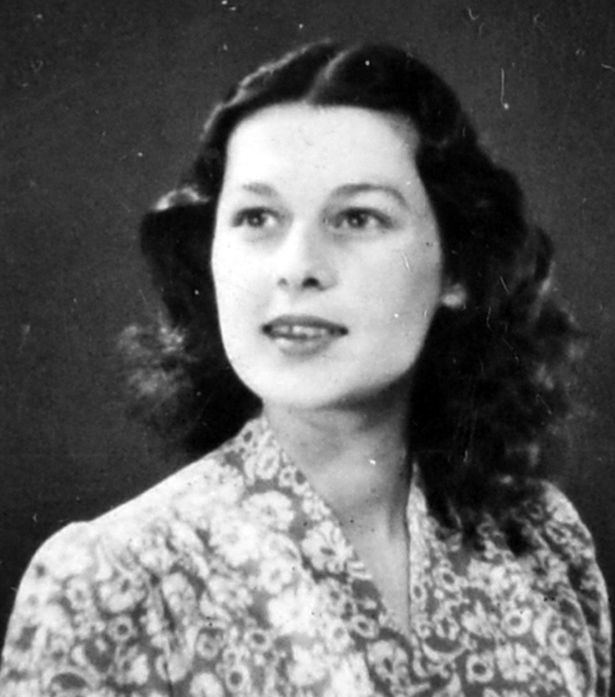 | ||
Born 26 June 1921Paris, France ( 1921-06-26 ) Unit Special Operations ExecutiveF Section Awards George CrossCroix de Guerre (France)Medaille de la Resistance (France) Died February 5, 1945, Ravensbruck concentration camp Children Tania Damaris Desiree Szabo Similar People Virginia McKenna, Odette Hallowes, Nancy Wake, Denise Bloch, Paul Scofield | ||
Leslie Fernandez trained the SOE agent Violette Szabo
Leger Battlefield Tours - Violette Szabo
Violette Reine Elizabeth Szabo GC (née Bushell; 26 June 1921 – c. 5 February 1945) was a Special Operations Executive (SOE) agent during the Second World War and a posthumous recipient of the George Cross. On her second mission into occupied France, Szabo was captured by the German army, interrogated, tortured and deported to Ravensbrück concentration camp in Germany, where she was executed.
Contents
- Leslie Fernandez trained the SOE agent Violette Szabo
- Leger Battlefield Tours Violette Szabo
- Early life
- Second World War
- Special Operations Executive
- First mission
- Second mission
- Capture and interrogation
- Ravensbrck
- Execution
- Awards and honours
- Museums and memorials
- Media
- References
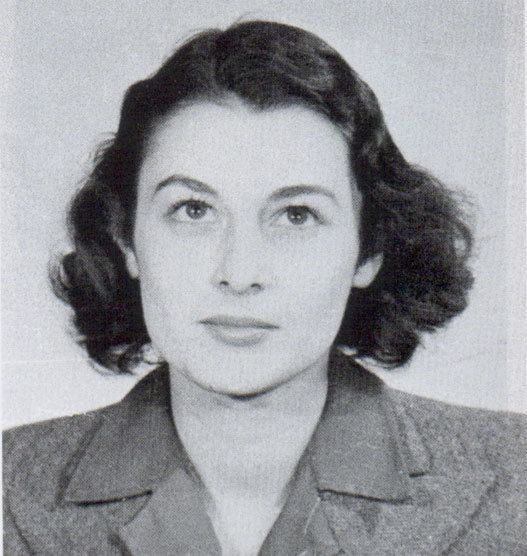
Early life

Violette Szabo was born Violette Reine Elizabeth Bushell in Paris on 26 June 1921. She was the second child of five and the only daughter of Charles George Bushell, son of a publican from Hampstead Norreys. He was a taxi-driver, car salesman, and, during the Second World War, a storekeeper. Her mother, Reine Blanche Leroy, was a dressmaker originally from Pont-Remy, Somme. The couple moved to London, but because of the Great Depression, Violette and Dickie, her youngest brother, lived with their maternal aunt in Picardy in northern France until the family was reunited in south London when Violette was eleven. She was an active and lively girl, enjoying gymnastics, long-distance bicycling, and ice-skating with four brothers and several male cousins. She was regarded as a tomboy, especially as she was taught by her father to be a good shot. Violette attended school in Brixton, quickly relearning the English she had lost, where she was popular and regarded as exotic, due to her ability to speak fluent French. At the age of fourteen, she went to work at a French corsetière in South Kensington and then at Woolworths in Oxford Street. Her home life was loving, though she often clashed with her strict father and once ran away to France after an argument. The family, except her monolingual father, would often converse in French. At the outbreak of the Second World War, she was working at Le Bon Marché, a Brixton department store.
Second World War
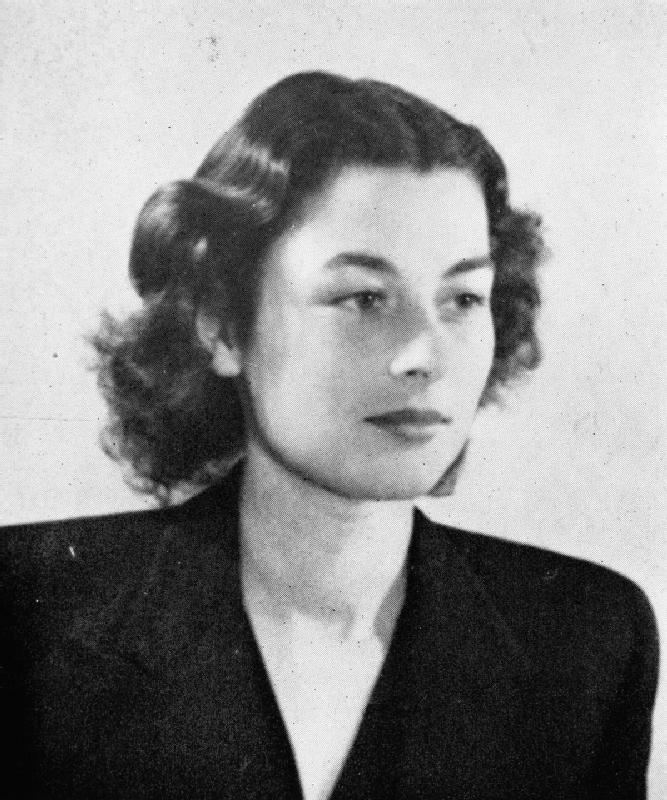
In early 1940 Szabo joined the Women's Land Army and was sent to carry out strawberry picking in Fareham, Hampshire, but she soon returned to London to work in an armaments factory in Acton. She met Étienne Szabo, a non-commissionned officer in the French Foreign Legion of Hungarian descent, at the Bastille Day parade in London in 1940, where Violette had been sent by her mother, accompanied by her friend Winnie Wilson, to bring home a homesick French soldier for dinner. They married at Aldershot Registry Office in Manor Park on 21 August 1940 after a whirlwind 42-day romance. Violette was 19, Étienne was 31. They enjoyed a week's honeymoon before Étienne set off from Liverpool to fight in the abortive Free French attack on Dakar, Senegal. From there, Étienne returned to South Africa before seeing action, again against the Vichy French, in the successful Anglo-Free French campaigns in Eritrea and Syria in 1941.
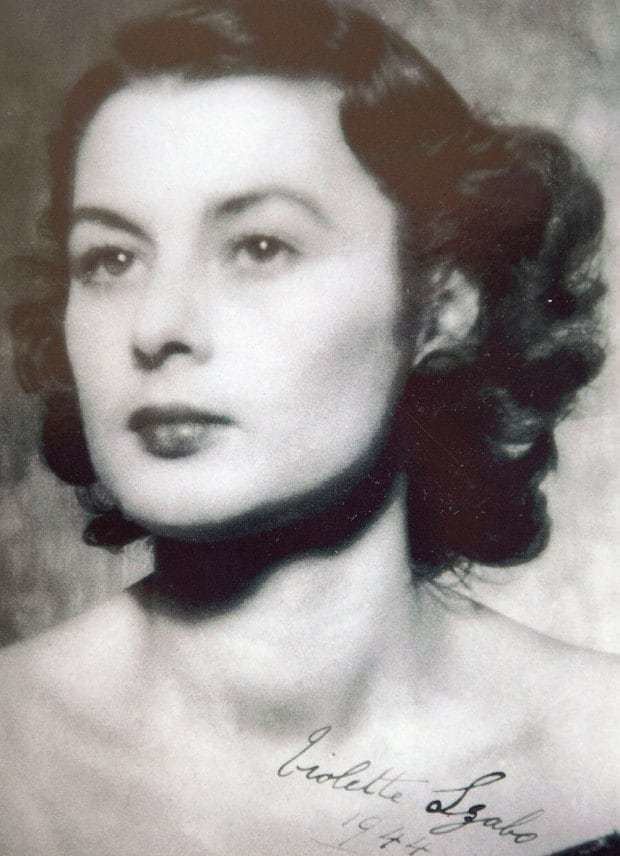
After her marriage Violette became a switchboard operator for the General Post Office in central London, working throughout the Blitz. Bored by the job, she enlisted in the Auxiliary Territorial Service (ATS) on 11 September 1941. She was posted to Leicester for initial training before being sent to one of the first mixed anti-aircraft batteries of the 7th Heavy Anti-Aircraft Training Regiment, Royal Artillery in Oswestry, Shropshire for specialised instruction as a predictor and then to the 481st Heavy (Mixed) Anti-Aircraft Battery. After further training in Anglesey, Gunner Szabo and her unit were posted to Frodsham, Cheshire near Warrington, from December 1941 to February 1942. Violette found within weeks that she was pregnant, so she left the ATS to return to London for the birth.
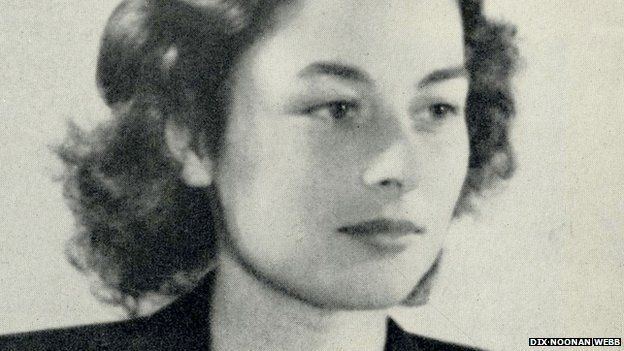
Szabo took a flat in Notting Hill, which was to be her home until she left for her second mission to France in June 1944. On 8 June 1942, she gave birth to Tania Damaris Desiree Szabo at St Mary's Hospital, London while Étienne was stationed at Bir Hakeim in North Africa. The following day, he took part in a valiant defence against the Afrika Korps, escaping with his battalion from the assault of the 15th Panzer Division on 10 June.
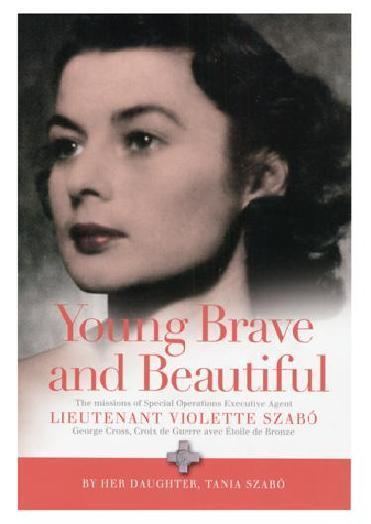
Violette sent her baby to childminders while she worked at the South Morden aircraft factory where her father was stationed. During this period, she was informed of her husband's death in action. Étienne had died on 24 October 1942 from chest wounds received while leading his men in a diversionary attack on Qaret el Himeimat, at the beginning of the Second Battle of El Alamein; he had never seen his daughter. It was Étienne's death that made Violette accept an offer to train as a field agent by the British Special Operations Executive (SOE) as her best way of fighting the enemy that killed her husband.
Special Operations Executive
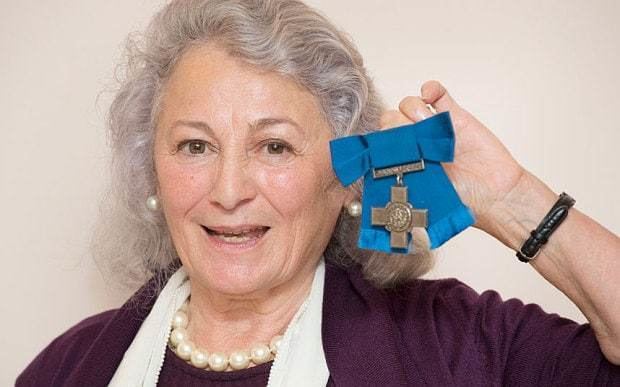
It is unclear how or why Violette Szabo was recruited by F-Section, as her surviving official file is very thin, but her fluency in French and her previous service in the ATS probably brought her to the attention of SOE. She would have been invited to an interview regarding war work with a Mr. E. Potter, the alias of Selwyn Jepson, a detective novelist and the F-Section recruiter. Szabo was given security clearance on 1 July 1943 and selected for training as a field agent on 10 July. She was commissioned as a section leader in the First Aid Nursing Yeomanry, a civilian service often used by SOE as a cover for female agents.
After an assessment for fluency in French and a series of interviews, Szabo was sent from 7–27 August to STS 4, a training school at Winterfold House, and after a moderately favourable report, to Special Training School 24 of Group A at Arisaig in the Scottish Highlands in September and October. Szabo received intensive instruction in fieldcraft, night and daylight navigation, weapons and demolition. Once again her reports were mixed, but she passed the course and moved on to Group B.
Szabo was sent to the SOE "finishing school" at Beaulieu, Hampshire, where she learnt escape and evasion, uniform recognition, communications and cryptography, and had further training in weaponry. The final stage in training was parachute jumping, which was taught at Ringway Airport near Manchester. On her first attempt, Szabo badly sprained her ankle and was sent home for recuperation, spending some time in Bournemouth (it was this ankle that was to fail her later in France). She was able to take the parachuting course again and passed with a second class in February 1944. On 24 January 1944, Szabo made her will, witnessed by Vera Atkins and Major R. A. Bourne Paterson of SOE, naming her mother, Reine, as executrix and her daughter Tania as sole beneficiary.
In 2012 Max Hastings wrote that Szabo was "adored by the men and women of SOE both for her courage and endless infectious Cockney laughter", while Leo Marks remembered her as "A dark-haired slip of mischief....She had a Cockney accent which added to her impishness".
First mission
Due to the ankle injury, Szabo's first deployment was delayed, but it was during her second course at Ringway that she first met Philippe Liewer (d. c. 1948). While in London she also socialised with Bob Maloubier, so SOE decided she would work as a courier for Liewer's Salesman circuit. However, the mission was postponed when F Section received a signal from Harry Peulevé's (codename Jean) Author circuit warning that several members of the Rouen-Dieppe group had been arrested, including Claude Malraux (codename Cicero; brother of novelist Andre Malraux) and radio operator Isidore Newman. This extra time meant Szabo could be sent for a refresher course in wireless operation in London, and it was then that Leo Marks, SOE's cryptographer, seeing her struggle with her original French nursery rhyme, gave Szabo his own composition, The Life That I Have as her code poem.
On 5 April 1944 Szabo and Liewer were flown from RAF Tempsford in Bedfordshire in a US B-24 Liberator bomber and parachuted into German-occupied France, near Cherbourg. Her cover was that she was a commercial secretary named Corinne Reine Leroy (the latter two names being her mother's first and maiden names), who was born on 26 June 1921 (her real birthdate) in Bailleul, and who was a resident of Le Havre, which gave her reason to travel to the Restricted Zone of German occupation on the coast.
Under the code name "Louise", which happened to be her nickname (she was also nicknamed "La P'tite Anglaise", as she stood only 5'3" tall), she and SOE colleague Philippe Liewer (under the name "Major Charles Staunton"), organiser of the Salesman circuit, tried to assess the damage made by the German arrests, with Szabo travelling to Rouen, where Liewer could not go as a wanted man (both he and Maloubier were on wanted posters with their codenames) and Dieppe to gather intelligence and carry out reconnaissance. It soon became clear that the circuit, which originally involved over 120 members (80 in Rouen and 40 on the coast) had been exposed beyond repair. Szabo returned to Paris to brief Liewer, and in the two days before they were due to depart, she bought a dress for Tania, three frocks and a yellow sweater for herself, and perfume for her mother and herself. While the destruction of Salesman was a heavy blow to SOE, her reports on the local factories producing war materials for the Germans were important in establishing Allied bombing targets.
She returned to England by Lysander, piloted by Bob Large, DFC, of the RAF, on 30 April 1944, landing after a stressful flight in which the plane had been hit by anti-aircraft fire over Chateaudun, and Szabo had been thrown heavily about the body of the plane. Large had turned off the intercom when attacked and did not turn it back on for the rest of the flight, so when the plane landed heavily due to a burst tyre, and he went to get Szabo out, she (thinking they had been shot down and not having seen her blond pilot) let Large have a volley of abuse in French, mistaking him for a German. When she realised what had really happened, he was rewarded with a kiss. Philippe Liewer returned at the same time in another Lysander. On 24 May 1944 Szabo was promoted to Ensign in the FANY.
Second mission
After two aborted attempts, due to stormy weather on the night of 4/5 June and the abandonment of the intended landing ground on 5/6 June by the Resistance reception committee because of German patrols, Szabo and three colleagues were dropped by parachute from a USAAF Liberator flown from RAF Harrington onto a landing field near Sussac on the outskirts of Limoges early on 8 June 1944 (immediately following D-Day, and Tania Szabo's second birthday). Szabo was part of a four-person team sent to operate in the departement of Haute Vienne with the circuit code-name 'Salesman II', led by her SOE commander Philippe Liewer (now codenamed Hamlet), whose rolled-up Rouen circuit had been 'Salesman', and including Second Lieutenant Jean-Claude Guiet (codenames Claude and Virgile) of the US Army as wireless operator (W/O), and Bob Maloubier (alias Robert 'Bob' Mortier; codenames Clothaire and Paco), Violette and Liewer's friend and comrade of SOE who was to act as military instructor to the local Maquis, and who had worked as weapons instructor and explosives officer for Liewer on the original Salesman I circuit. For this mission, Szabo's cover was that she was a Mme Villeret, the young widow of an antiques dealer from Nantes. It is possible Szabo had twisted an ankle on landing.
Upon arrival, she was sent to co-ordinate the activities of the local Maquis in sabotaging communication lines during German attempts to stem the Normandy landings. When he arrived in the Limousin, Philippe Liewer found the local Maquis to be poorly led and less prepared for action than he expected. To better co-ordinate Resistance activity against the Germans, he decided to send his courier, Violette Szabo, as his liaison officer to the more active Maquis of Correze and the Dordogne, led by Jacques Poirier , head of the renamed Digger circuit, who had taken over from Harry Peulevé of the Author circuit, upon the latter's arrest. However, due to poor intelligence gathering by the local Resistance, Liewer was unaware that the 2nd SS Panzer Division was making its slow journey north to the Normandy battlefields through his area.
Capture and interrogation
At 9.30 am on 10 June Szabo set off on her mission, not inconspicuously by bicycle as Liewer would have preferred, but in a Citroen driven by a young maquis section leader, Jacques Dufour ('Anastasie'). He had insisted upon using the car, even though the Germans had forbidden the use of cars by the French after D-Day, and would drive her half the 100 kilometres (62 mi) of her journey. At her request to Liewer, Szabo was armed with a Sten gun and 8 magazines of ammunition. She was dressed in a light suit, flat-heeled shoes and no stockings. On their way across the sunlit fields of south central France they picked up Jean Bariaud, a twenty-six-year-old Resistance friend of Dufour, who would keep him company on the return journey.
Their car raised the suspicions of German troops at an unexpected roadblock outside of Salon-la-Tour that had been set up to find Sturmbannführer Helmut Kämpfe, a battalion commander of the 2nd SS Panzer Division, who had been captured by the local resistance. When Dufour slowed the car, the unarmed Bariaud was able to escape and later warn the Salesman team of the arrest of his two companions.
According to Minney and Vickers, when they had stopped, Szabo and Dufour leapt from the car, he to the left and she to the right and the cover of a tree, as Dufour opened fire. A gun battle ensued during which a woman emerging from a barn was killed by the Germans. As armoured cars arrived at the scene, Szabo crossed the road to join Dufour, and they leapt a gate, before running across a field towards a small stream. They then ran up a hill towards some trees, when Szabo fell and severely twisted an ankle. She refused Dufour's offer of help, urging him to flee, and, dragging herself to the edge of the cornfield, she struggled to an apple tree. Standing behind the tree, she then provided Dufour with covering fire, allowing him to make his escape to hide in a friend's barn. Szabo fought the Germans for thirty minutes, killing a corporal, possibly more, and wounding some others. Eventually, she ran out of ammunition and was captured by two men who dragged her up the hill to a bridge over a railway. Here - hot, dishevelled, and in considerable pain - Szabo was questioned by a young officer whose armoured car had drawn up nearby. In a blazing fury of defiance, she refused his congratulations, spat out his forced cigarette, and spat in his face. She was then taken away, demanding that her arms be freed and that she be allowed one of her own cigarettes.
Szabo's captors were most likely from the 1st Battalion of 3rd SS Panzer Grenadier Regiment Deutschland (Das Reich Division) whose commanding officer was the missing Sturmbannführer Kampfe. In R.J. Minney's biography, as above, she is described as putting up fierce resistance with her Sten gun, although German documents of the incident record no German injuries or casualties. A recent biography of Vera Atkins, the intelligence officer for the French section of SOE, notes that there was a great deal of confusion about what happened to Szabo—the story was revised four times—and states that the Sten gun incident "was probably a fabrication". Szabo's most recent biographer, Susan Ottaway, includes the battle in her book, as does Tania Szabo in hers, and Philip Vickers in his book on Das Reich."
Violette Szabo was transferred to the custody of the Sicherheitsdienst (SD, the SS Security Service) in Limoges where she was interrogated for four days by SS-Sturmbannführer Kowatch. She gave her name as "Vicky Taylor", the name she had intended to use if she needed to return to England via Spain. (Her reason for choosing this name is unknown, but it may have been a play on szabo being the Hungarian word for "tailor".) From there, she was moved to Fresnes Prison in Paris and brought to Gestapo headquarters at 84 Avenue Foch for interrogation and torture by the Sicherheitsdienst, who by now knew of her true identity and activities as an SOE agent.
Ravensbrück
With the Allies driving deep into France and George Patton's Third US Army heading towards Paris, the decision was taken by the Germans to send their most valuable French prisoners to Germany. On 8 August 1944, Szabo, shackled to SOE wireless operator Denise Bloch, was entrained with other male and female prisoners, including several SOE agents she knew, for transfer. At some point in the journey, probably outside Chalons-sur-Marne, an Allied air raid caused the guards to temporarily abandon the train, allowing Szabo and Bloch to get water from a lavatory to the caged male prisoners in the next carriage, the two women both providing inspiration and a morale boost to the suffering men. When the train reached Reims, the prisoners were taken by lorries to a large barn for two nights, where Szabo, still tied at the ankle to Bloch, who was in good spirits, was able to wash some of her clothes in rudimentary fashion, and to speak about her experiences to her SOE colleague Harry Peulevé.
From Reims, via Strasbourg, the prisoners went by train to Saarbruecken and a transit camp in the suburb of Neue Bremm, where hygiene facilities were nonexistent, and food was only indigestible bread crusts. After about ten days, Szabo and most of the other women were sent on to Ravensbrück concentration camp, where over 92,000 women were to die during the war. The exhausted women arrived at this notorious place of disease, starvation, and violence on 25 August 1944 after a terrible eighteen-day journey.
Although she endured hard labour and malnutrition, she helped save the life of Belgian resistance courier Hortense Daman (Hortense Clews,), kept up the spirits of her fellow detainees, and, according to fellow inmate Virginia Lake, constantly planned to escape. While at Ravensbrück, Szabo, Denise Bloch, Lilian Rolfe and Lake were among 1,000 French women sent to the Heinkel factory at the sub-camp of Torgau. Here they protested and refused to make munitions, and were made to work in the vegetable cellar outside the camp walls and then to dig potatoes. The British women also made contact with French prisoners at a nearby POW camp, who being better fed, provided them with extra rations and offered to send messages to London with a transmitter they had built (there is no evidence they were successful).
After the Torgau incident, Szabo, Bloch, Rolfe and Lake were part of a group of around 250 prisoners sent back to Ravensbrück on 6 October, where Violette was put to work in the fabric store. In late October 1944, the protest women were transferred to a punishment camp at Königsburg, where they were forced into harsh physical labour felling trees, clearing rock-hard icy ground for the construction of an airfield and digging a trench for a narrow-gauge railway. Violette volunteered for tree-felling in the forest, where the trees gave some shelter from the bitter winds (Lilian and Denise were too ill to join her). In the bitter East Prussian winter of 1945, each day the women were made to stand for Appell (roll-call) in the early morning for up to five hours before being sent to work, many of them freezing to death. Szabo was dressed only in the summer clothes she had been wearing when sent to Germany and the women received barely any food and slept in frozen barracks without blankets. According to Christine Le Scornet, a seventeen-year-old French girl whom Violette befriended and Jeannie Rousseau, the co-leader of the Torgau revolt, she maintained her morale, was optimistic about liberation and continued to plan to escape. On 19 or 20 January 1945, the three British agents were recalled to Ravensbrück and sent first to the Strafblock, where they were possibly brutally assaulted and then to the punishment bunker, where they were kept in solitary confinement. The women were already in poor physical condition—Rolfe could barely walk—and the abuse finally weakened Szabo's morale.
Execution
Violette Szabo was executed in the execution alley at Ravensbrück, aged twenty-three, on or before 5 February 1945. She was shot in the back of the head while kneeling down, by SS-Rottenführer Schult in the presence of camp commandant Fritz Suhren (who pronounced the death penalty), camp overseer and deputy commandant Johann Schwarzhuber, SS-Scharführer Zappe, SS-Rottenführer Schenk (responsible for the crematorium), chief camp doctor Dr Trommer and dentist Dr Hellinger, from the deposition of Schwarzhüber recorded by Vera Atkins 13 March 1946. Denise Bloch and Lilian Rolfe—neither of whom could walk and were carried on stretchers—were shot at the same time, by order of the highest Nazi authorities; the bodies were disposed of in the camp crematorium. Their clothes were not returned to the camp Effektenkammer (property store) as usually happened after executions.
Along with Szabo, three other women members of the SOE were also executed at Ravensbrück: Denise Bloch, Lilian Rolfe, and Cecily Lefort, the latter murdered in the gas chamber sometime in February 1945. Of SOE's 55 female agents, thirteen were killed in action, twelve by execution, one from typhus in a Nazi concentration camp and one in hospital by meningitis.
While there is some confusion about the precise circumstances of her execution, Violette Szabo, along with her male and female colleagues who died in the concentration camps, is recorded by the War Office as having been killed in action. It must be noted that as an agent dressed in civilian clothes operating behind enemy lines, Violette Szabo was regarded by the Germans as a Franc-tireur not protected by the Geneva Convention and liable to summary execution. Though she was treated harshly at Ravensbrück, there is no conclusive proof that she was tortured or sexually assaulted by the Germans; her biographer, Susan Ottaway, thinks it unlikely, although the threat of both must have been ever-present.
Awards and honours
Szabo was the second woman to be awarded the George Cross, bestowed posthumously on 17 December 1946. The citation was published in the London Gazette and read:
St. James's Palace, S.W.1. 17 December 1946
The KING has been graciously pleased to award the GEORGE CROSS to: —
Violette, Madame SZABO (deceased), Women's Transport Service (First Aid Nursing Yeomanry).
Madame Szabo volunteered to undertake a particularly dangerous mission in France. She was parachuted into France in April, 1944, and undertook the task with enthusiasm. In her execution of the delicate researches entailed she showed great presence of mind and astuteness. She was twice arrested by the German security authorities but each time managed to get away. Eventually, however, with other members of her group, she was surrounded by the Gestapo in a house in the south-west of France. Resistance appeared hopeless but Madame Szabo, seizing a Sten-gun and as much ammunition as she could carry, barricaded herself in part of the house and, exchanging shot for shot with the enemy, killed or wounded several of them. By constant movement, she avoided being cornered and fought until she dropped exhausted. She was arrested and had to undergo solitary confinement. She was then continuously and atrociously tortured but never by word or deed gave away any of her acquaintances or told the enemy anything of any value. She was ultimately executed. Madame Szabo gave a magnificent example of courage and steadfastness.
The Croix de guerre avec etoile de bronze was awarded by the French government in 1947 and the Médaille de la Résistance in 1973. As one of the SOE agents who died for the liberation of France, Lieutenant Violette Szabo, FANY, is listed on the Valençay SOE Memorial.
Both Violette and Étienne Szabo were awarded the French Croix de guerre for their bravery in the field. On 17 December 1947 their five-year-old daughter Tania received the George Cross from King George VI on behalf of her late mother. Violette and Étienne Szabo are believed to be the most decorated married couple of World War II.
On 22 July 2015 Violette Szabo's medals and numerous associated items were sold at auction, realising £260,000 (£312,000 including buyer's premium). The purchaser was Lord Ashcroft, who placed the George Cross on permanent display at the Imperial War Museum from 7 October 2015.
Museums and memorials
Violette Szarbo has no known grave. Her official point of commemoration is the Commonwealth War Graves Commission Brookwood 1939-1945 Memorial to the Missing in Brookwood Military Cemetery, Surrey. She is named on panel 26. column 3.
The Violette Szabo GC Museum is located in the cottage in Wormelow Tump, Herefordshire, that Violette's English cousins formerly owned, and that Violette would visit before the war to enjoy walks in the surrounding hills. She also stayed at the farm while she was recuperating from her ankle injury and between her two missions to France. Tania Szabo attended the museum's opening in 2000, as did Virginia McKenna, Leo Marks and members of SOE.
The Jersey War Tunnels have a permanent exhibition room dedicated to Violette Szabo.
The Royal College of Music offers an annual award called the Violette Szabo GC Memorial Prize for pianists who accompany singers.
There is a mural dedicated to Violette Szabo in Stockwell, South London, painted in 2001: Stockwell War Memorial, Stockwell Road. Painted on the exterior of the entrance to a deep level shelter, this mural was executed by Brian Barnes (with the assistance of children from Stockwell Park School). It features Stockwell's famous people such as Violette Szabo and Vincent Van Gogh. It also commemorates the local people who gave their life in the war.
In 2008, a bronze bust of Szabo by sculptor Karen Newman was unveiled at the Albert Embankment of the River Thames, in front of Lambeth Palace.
At the entrance to Lambeth Town Hall there is a plaque commemorating Violette's residence in that borough.
There is a memorial to Violette Szabo in Le Clos, close to where the Salesman II team landed on 8 June 1944. She is named on the memorial to the SOE agents who were killed in France at Valençay, and also on the memorial to the SOE agents who flew from England but did not return at RAF Tempsford.
There is also a memorial to Szabo at the entrance to the rugby field in the village of Salon La Tour, where she was captured.
Media
Szabo's daughter, Tania Szabo, wrote a reconstruction of her two 1944 missions into the most dangerous areas in France with flashbacks to her growing up. Author Jack Higgins wrote the foreword and US-French radio-operator, Jean-Claude Guiet, who had accompanied her on the mission in the Limousin, wrote the introduction. On 15 November 2007, at the launch of the book, Young Brave and Beautiful: The Missions of Special Operations Executive Agent Lieutenant Violette Szabo, at The Jersey War Tunnels, the Lieutenant Governor of Jersey said of her, "She's an inspiration to those young people today doing the same work with the risk of the same dangers". Odette Churchill GC said, "She was the bravest of us all."
Szabo's wartime activities in German-occupied France were dramatised in the film Carve Her Name with Pride, starring Virginia McKenna and based on the 1956 book of the same name by R. J. Minney. Whilst in the SOE, she met Leo Marks, codes officer of the SOE, who gave her what is now thought of as the definitive World War II poem code, The Life That I Have.
The 2009 video game Velvet Assassin by Replay Studios is inspired by Szabo's life as an allied spy during the Second World War, with the protagonist sharing her first name.
